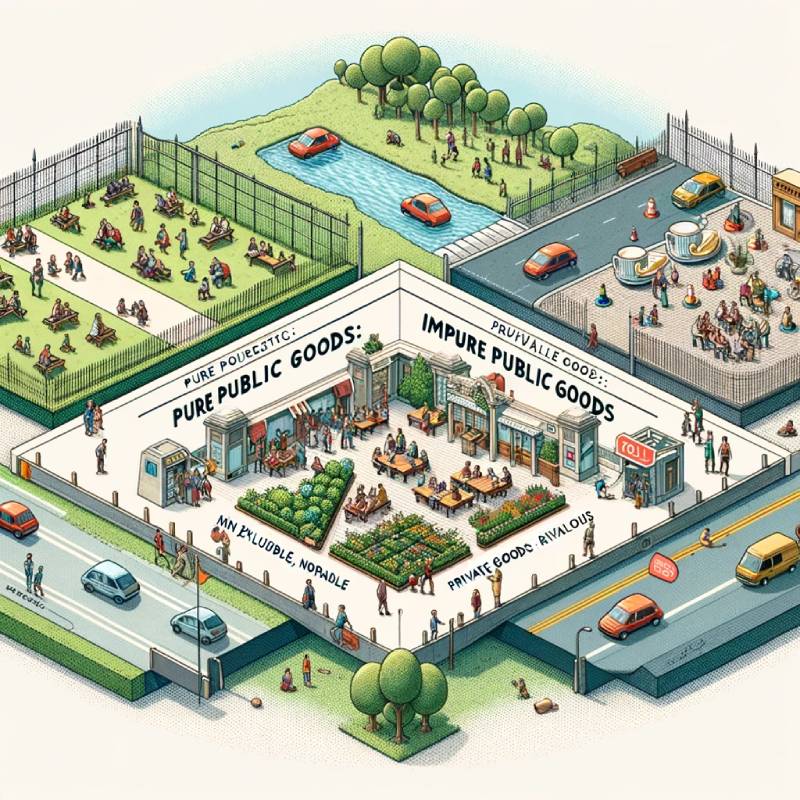Public goods, impure public goods, and private goods are categories that help us understand the nature of goods and services and how they are consumed. Each category has distinct characteristics, particularly regarding their excludability (whether people can be prevented from using them) and their rivalry (whether one person’s use diminishes another’s ability to use them). Here’s a breakdown of each type:
Pure Public Goods
Pure public goods are characterized by non-excludability and non-rivalry. This means that no one can be excluded from using the good, and one person’s use of the good does not reduce its availability to others. Examples include clean air, national defense, and public fireworks displays. Because of their nature, pure public goods are usually provided by the government or through collective action, as private markets would struggle to supply them efficiently due to the “free rider” problem, where individuals might benefit from the good without contributing to its cost.
Impure Public Goods
Impure public goods (also known as quasi-public goods) exhibit some degree of excludability and rivalry but not to the extent that private goods do. These goods are often partially excludable, meaning that it’s possible to prevent some people from using them, but not without incurring some cost. They might also be non-rival up to a point, after which consumption begins to reduce availability for others. Examples include toll roads, public parks, and cable television. Impure public goods often require a mix of public and private sector involvement for their provision and maintenance.
Private Goods
Private goods are both excludable and rivalrous. This means that individuals can be prevented from using them, and one person’s use of the good diminishes its availability for others. Examples of private goods include food, clothing, and cars. These goods are typically provided by the private sector, as the market efficiently allocates them based on demand and supply. Consumers must pay to access private goods, and their consumption directly affects their availability to others.
The distinction between these categories helps in understanding how different goods and services should be provided and financed. While pure public goods often necessitate government intervention to ensure they are available for all, private goods are efficiently distributed by the market. Impure public goods fall somewhere in between, requiring innovative solutions to balance accessibility with sustainability.

